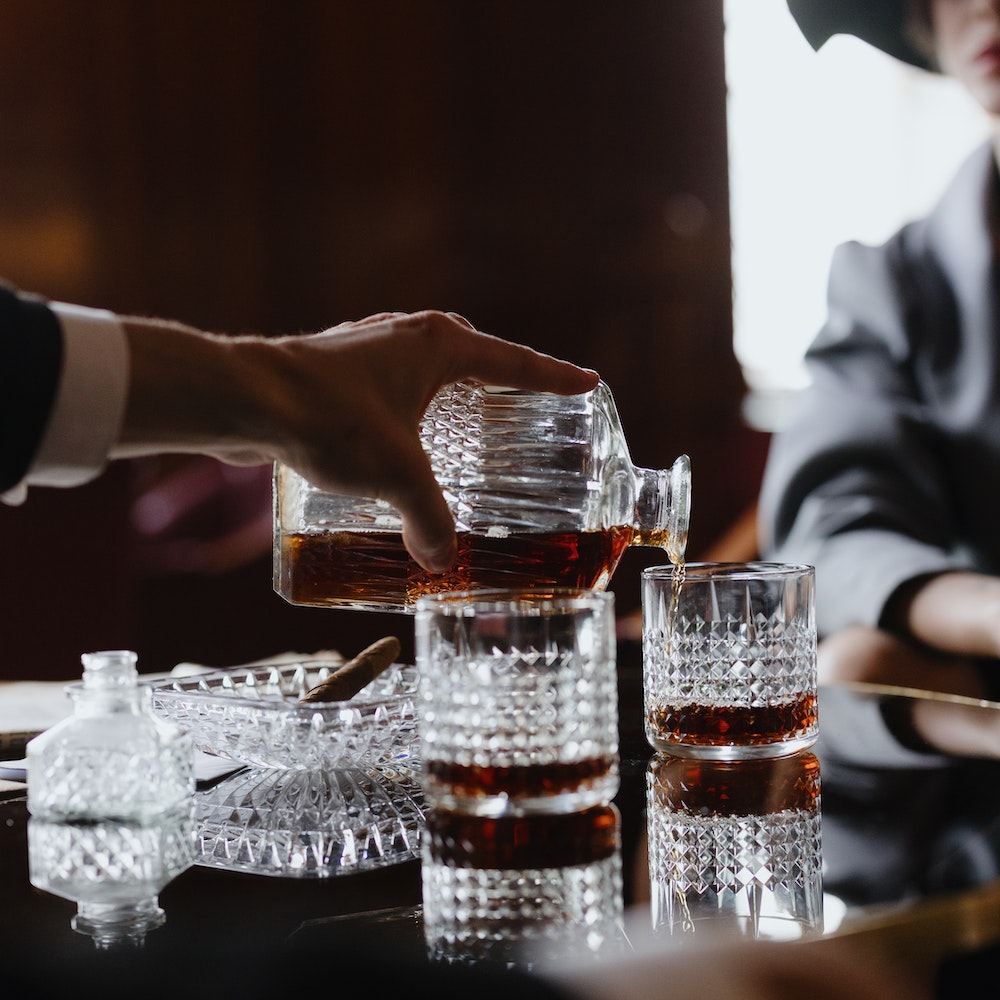
A Step-by-Step Guide to Cognac Tasting
You may be aware of wine tasting sessions, where you use a specific set of techniques in order to fully experience the flavours and aromas present in wine. Well, wine isn’t the only alcoholic drink that requires a method to taste. There are also tasting sessions and methods for aged liquors such as whiskey tasting and cognac tasting. Today we’re focusing on how to make the most out of cognac. These tips are useful for everyone, whether you’re a beginner or you’re a cognac enthusiast. Let’s have a look at these cognac tasting techniques.
The appropriate glassware for cognac tasting
While it would be possible to serve cognac in any old glass, using the appropriate glassware during cognac tasting will greatly enhance the tasting experience. The recommended type of glass to serve cognac in is a tulip or balloon glass. These are ones with a bowl which tapers upwards towards the neck. This shape helps trap the cognac’s aroma in the glass for longer.
Related article: Brandy & Cognac: Same or Different?
Make the cognac cry
The first step to any cognac tasting is to take note of the appearance of the drink. No, this doesn’t only entail observing its colour and consistency through the glass. There is a ritual in cognac tasting known as “making the cognac cry.”
Similar to swirling a glass of wine prior to tasting, making the cognac cry during cognac tasting involves rotating the glass. This allows you to not only notice the drink’s colour and clarity; you can also see how viscous it is by the way the cognac on the walls of the glass either sticks or runs down the glass.
Noticing these little details can give you insight into how long the cognac was aged, as well as its taste. A darker cognac may have been aged for longer, or been aged in a specific oak cask. Meanwhile, more viscosity usually means the drink would be sweet.
Taste with your nose
As it is with wine tasting, cognac tasting also involves tasting with your nose. Again, rotate the glass before taking a good whiff of the cognac, in order to release the drinks aromas out of the glass bowl. Then, tip the mouth of the glass towards your nose and inhale.
Take note of the smells that you’re hit with. Cognac normally contains either fruity or floral notes, such as:
- Violets
- Vine flowers
- Grapees
- Lime
- Vanilla
Take a sip
Once your eyes and your nose have taken in the drink, it’s time for the last and most important step of cognac tasting: actually taking a sip! Notice that it’s recommended to sip and not gulp, so that you can really savour all those flavours as the drink sits on your palate. This part of cognac tasting in particular requires mindfulness and close attention to the tastes that you’re getting. Let the cognac sit on your palate for a bit before swallowing, and try to identify whether your cognac is sweet, smooth, or rich.
When cognac tasting, also look out for flavours like:
- Honey
- Oakwood
- Nuts
- Coffee
- Vanilla
- Pepper
- Fruits
just to name a few!
Notice the finish
Cognac tasting doesn’t end when you swallow the cognac or you’ve finished your glass. Once the cognac has gone down your system, take note of what flavours still remain on your palate, and what aromas you can still smell. In general, the finish of older cognacs will last longer than younger ones. In a way, the finish is the true experience of a cognac.
Cognac available at Red & White:
- Hennesy VSOP Cognac
- Courvoisier XO Cognac
- Bisquit & Dubouché VSOP Cognac
Discover the premium selection of brandy at Red & White Shop. Our liquor store’s wide array of brands and types ensures you’ll find the perfect Brandy for any event.




